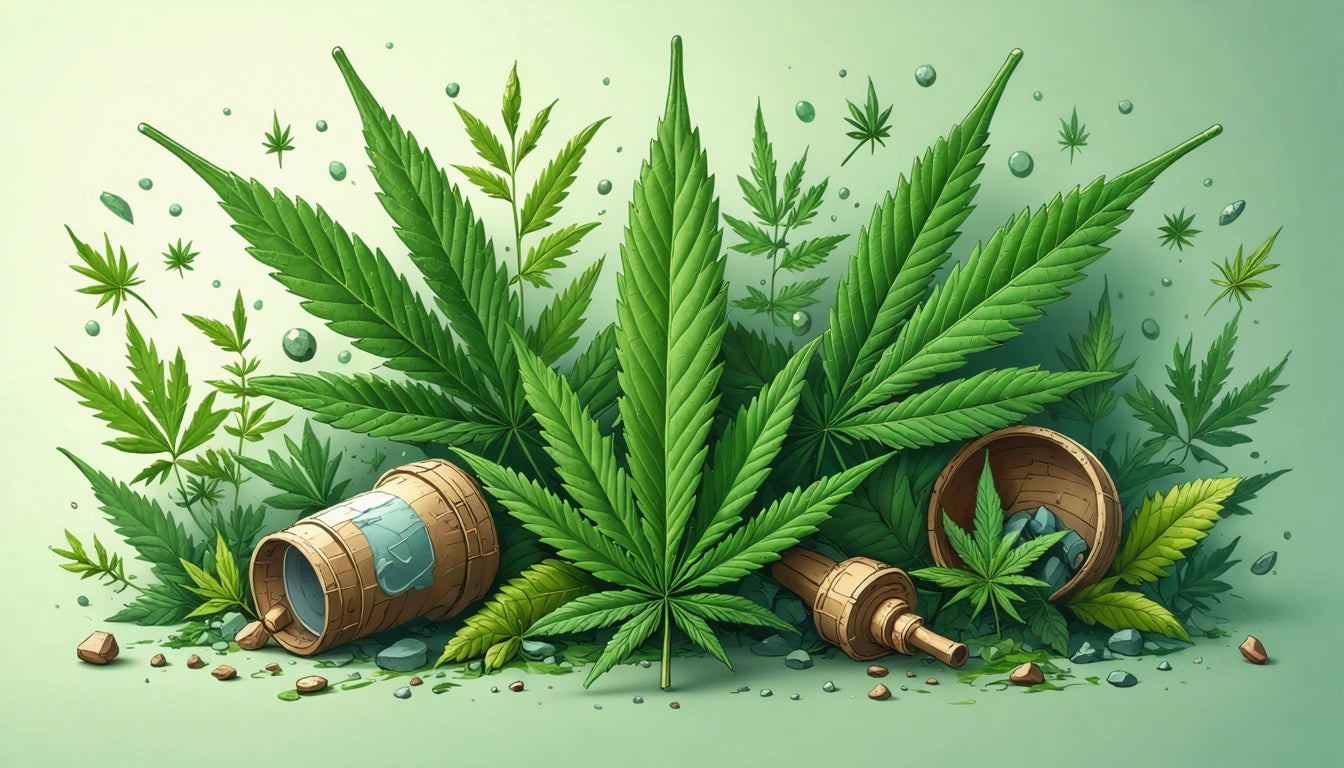Table of Contents
How Long Does THC Stay Detectable in a Mouth Swab Test?
Mouth swab tests have become increasingly common for detecting recent cannabis use, particularly in workplace testing and roadside checks. Understanding how long THC remains detectable in saliva is crucial information for cannabis consumers who may face testing. This guide examines the detection window for THC in oral fluid tests and the various factors that influence these timeframes.
Detection Window Basics for Mouth Swab Tests
Oral fluid tests typically detect THC for a shorter period compared to urine or hair tests. Generally, THC remains detectable in saliva for approximately 24-72 hours after consumption for most occasional users.
The standard detection windows are:
- Occasional users (once a week or less): 24-48 hours
- Moderate users (several times per week): 48-72 hours
- Heavy, daily users: Up to 3-4 days
These timeframes can vary based on multiple factors including metabolism, hydration levels, and the specific testing technology used. Most standard mouth swab tests are designed to detect THC use within this relatively recent window, making them primarily useful for identifying very recent consumption rather than historical use.
Factors Affecting How Long THC Remains Detectable
Consumption Method
How cannabis is consumed significantly impacts detection times in oral fluid:
- Smoking or vaping: Directly deposits THC in the mouth, leading to higher initial concentrations and potentially longer detection periods
- Edibles: May result in lower oral cavity concentrations but can still be detected
- Tinctures or sublingual products: Create direct oral cavity exposure, potentially extending detection times
The direct contact between cannabis smoke or vapor and the oral tissues leads to THC residue remaining in the mouth, which is precisely what oral fluid tests are designed to detect.
Individual Metabolic Factors
Personal biological factors play a crucial role in how quickly THC clears from saliva:
- Metabolism rate: Faster metabolisms may clear THC more quickly
- Hydration levels: Being well-hydrated can help process and eliminate THC
- Body mass index: May influence how THC is distributed and processed
- Age: Metabolic processes typically slow with age
How Frequency of Use Impacts Detection Times
Usage patterns significantly influence how long THC remains detectable in a mouth swab test:
Occasional Users
Those who consume cannabis once a week or less typically clear THC from their saliva within 24-48 hours. For very infrequent users who might consume once a month or less, detection times may be even shorter, potentially clearing within 24 hours.
Regular Users
Individuals who consume cannabis several times per week but not daily may have detection windows extending to 48-72 hours. The body doesn't fully clear THC between uses, leading to a slight accumulation effect.
Daily or Heavy Users
For those who consume multiple times daily, THC can remain detectable for 3-4 days or occasionally longer. This extended window occurs because THC and its metabolites accumulate in the body's fat stores and are continuously released back into the bloodstream and saliva.
When storing cannabis products, proper humidity control using specialized humidity regulation packs helps maintain potency and freshness, which can affect the concentration of cannabinoids when consumed.
Test Sensitivity and Technology Considerations
Not all mouth swab tests are created equal. The technology and sensitivity levels vary significantly:
Standard Workplace Tests
Most workplace testing uses standardized cutoff levels, typically detecting THC at concentrations of 4-25 ng/mL. These tests balance sensitivity with practicality for employment screening.
Law Enforcement Tests
Roadside tests used by law enforcement may have different sensitivity levels, often designed to detect very recent use that might indicate impairment. These tests may have lower cutoff thresholds to catch even minimal levels of THC.
Laboratory Confirmation
Initial positive results are often confirmed using more sophisticated laboratory methods such as gas chromatography/mass spectrometry (GC/MS) or liquid chromatography/tandem mass spectrometry (LC/MS/MS). These confirmation tests have much lower detection limits and higher accuracy.
Understanding how THC testing works can help consumers make informed decisions about their cannabis use in relation to potential testing situations.
How Mouth Swab Tests Compare to Other Testing Methods
Oral fluid testing has distinct characteristics compared to other common drug testing methods:
| Testing Method | Typical Detection Window | Invasiveness | Tampering Difficulty |
|---|---|---|---|
| Mouth Swab | 1-3 days | Low | Medium |
| Urine | 3-30+ days | Medium | Medium |
| Blood | Up to 7 days | High | High |
| Hair | Up to 90 days | Low | High |
The relatively short detection window of mouth swab tests makes them primarily useful for identifying very recent use, which aligns with their common application in situations where current impairment is the primary concern, such as roadside testing.
In contrast, urine tests can detect THC metabolites for much longer periods, making them more suitable for monitoring abstinence over time rather than immediate impairment.
Practical Implications for Cannabis Consumers
Understanding detection windows has important practical applications for cannabis consumers:
- Employment testing: Most pre-employment drug screens include THC testing, and knowing detection windows helps in preparation
- Safety-sensitive positions: Jobs in transportation, healthcare, and similar fields often require random drug testing
- Legal considerations: In states with legal cannabis, driving under the influence remains illegal and may be tested via mouth swab
- Probation or legal monitoring: Court-ordered drug testing often includes THC screening
For those subject to testing, understanding that mouth swab tests primarily detect recent use (within 1-3 days) rather than historical use can help inform consumption decisions. This differs significantly from urine testing, which can detect use from weeks prior.
While various methods and products claim to help pass saliva tests, most lack scientific validation. The most reliable approach remains abstaining from cannabis use for at least 72 hours before an anticipated test for occasional users, and potentially longer for heavy users.
As testing technology continues to evolve, staying informed about detection methods and timeframes remains important for cannabis consumers who may face testing in various contexts.











Leave a comment
All comments are moderated before being published.
This site is protected by hCaptcha and the hCaptcha Privacy Policy and Terms of Service apply.